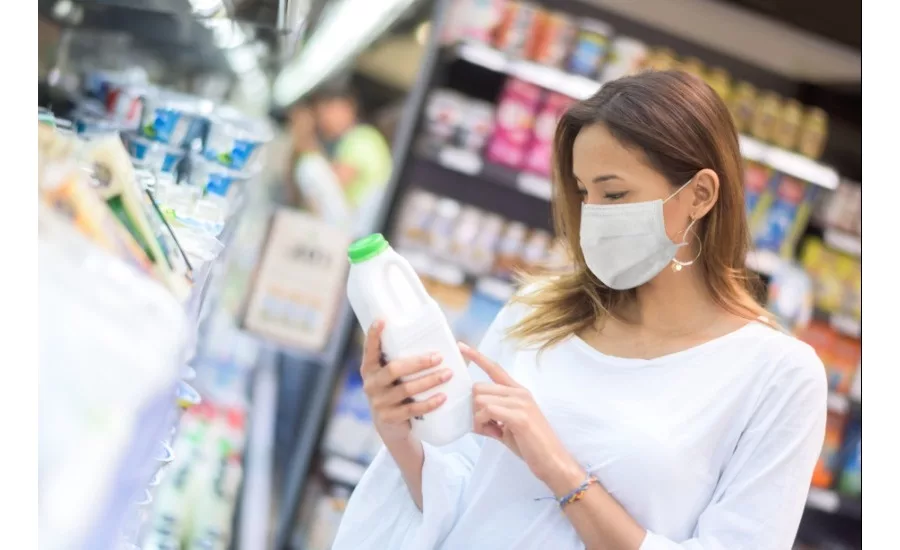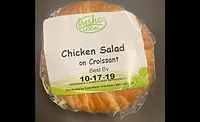COVID-19
FDA allows ingredient swaps without label changes, upsetting some with allergies
Plus, vending machines can temporarily skip posting calorie counts

Hundreds of people with food allergies or sensitivities in their families are speaking out against the FDA’s latest move to loosen food labeling rules during the pandemic.
Manufacturers are allowed to make temporary, minor formula adjustments during the public health emergency without noting the changes on labels. Some examples might include leaving peas out of a soup, using bleached flour instead of unbleached, or subbing canola oil for sunflower oil, according to the FDA’s guidance.
The flexibility is meant to help processors that are running short of some ingredients because of supply chain disruptions.
Any ingredient switches must not cause health problems, such as introducing potential allergens, even beyond the eight major ones, the FDA says. But people worried about allergies say in written comments piling up on the FDA site that even minor changes can cause reactions, potentially life-threatening for some people.
The advocacy group FARE, or Food Allergy Research and Education, asked the FDA to require manufacturers to disclose changes and share them broadly, through websites, social media and labeling alternatives like stickers.
The group understands the obstacles for the food manufacturers, “but it is our hope that we can work together with FDA to find a solution that benefits everyone and ensures the safety of the food supply for those whose lives depend on knowing exactly what is in the products they are buying,” says Lisa Gable, chief executive officer of FARE.
Vending machines don’t have to display calorie info
Vending machines do not have to meet requirements to display calorie counts for food during the COVID-19 emergency, the FDA says.
Operators of 20 or more machines use a variety of methods to display calorie information, including electronic displays, signs or stickers.
Machine owners are experiencing temporary disruptions in their supply chains due the new coronavirus, necessitating substitutions of products that might not include calorie numbers on the package fronts, the FDA’s guidance notes. Plus, some operators might lack adequate staff to update displays.
Moving quickly to help ensure an adequate food supply during the COVID-19 outbreak, the FDA released this guidance document and others on labeling—including ones for packaging eggs and selling packaged food meant for restaurants to retailers—without hearing comments first, determining that public participation was not feasible or appropriate.
Looking for quick answers on food safety topics?
Try Ask FSM, our new smart AI search tool.
Ask FSM →
The regulators encourage processors to print new labels with updated ingredients or add stickers to inform consumers about changes, if possible, but acknowledge those options might not be feasible because of limited resources during the emergency.
“Access to certain ingredients may be challenging during this unprecedented time,” the guidance says. “The food industry workforce may be stretched by illness and the changes to food manufacturing operations that are needed to operate as safely as possible during the pandemic.”
The agency recommends that manufacturers find ways to let consumers know about changes not noted on labels, such as posts on their websites or point-of-sale labeling.
Formula changes should follow these FDA guidelines:
- Safety: substitute ingredient does not cause any adverse health effect (including food allergens, gluten, sulfites or other ingredients known to cause sensitivities [see section C.2.a] in some people, for example, glutamates)
- Quantity: generally present at 2% or less by weight of the finished food
- Prominence: the ingredient being omitted or substituted for the labeled ingredient is not a major (prominent) ingredient (for example, replacing rice flour for wheat flour in a muffin) or an ingredient that is the subject of a label statement (such as butter in a cookie with a “made with real butter” claim)
- Characterizing or ingredient in name: the ingredient being omitted or substituted is not a characterizing ingredient (such as omitting raisins in a raisin bread) where the presence of the ingredient has a material bearing on consumer purchasing
- Claims: an omission or substitution of the ingredient does not affect any voluntary nutrient content or health claims on the label
- Nutrition/function: an omission or substitution of the labeled ingredient does not have a significant impact on the finished product, including nutritional differences or functionality
To read all more specific recommendations for substitutions, click here for the guidance document.









